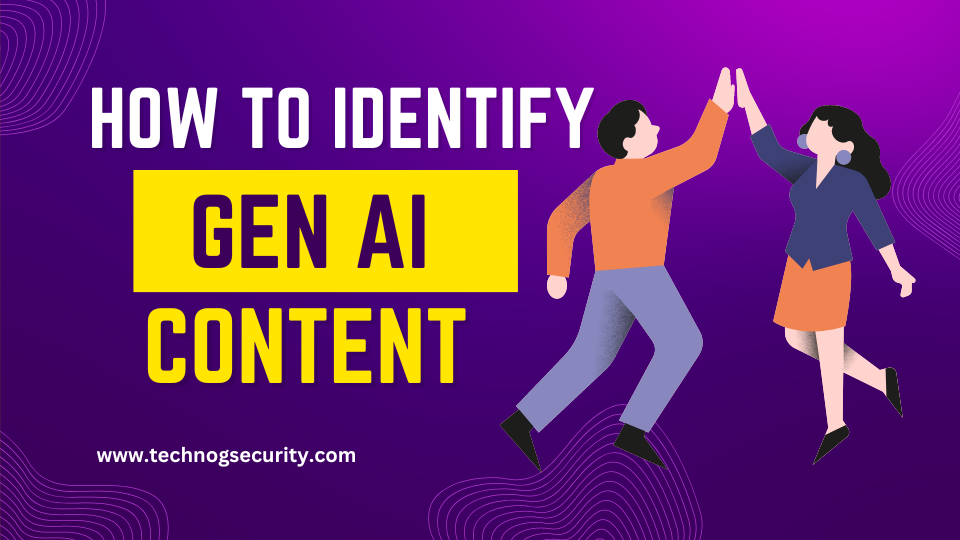In today’s digital landscape, content creation has taken on a new dimension with the emergence of Generative Artificial Intelligence (GEN AI). GEN AI content refers to material generated by AI algorithms that mimic human creativity and comprehension. Identifying GEN AI content is crucial as it helps distinguish between machine-generated content and that produced by human writers.
This blog explains the following:
- Does the Content Seamlessly Adapt to Different Contexts?
- Is the Content Creatively Generated?
- Does the Content Reflect Deep Understanding?
- Is the Content Emotionally Engaging?
- Does the Content Demonstrate Originality?
In this Article
- Does the Content Seamlessly Adapt to Different Contexts?
- Is the Content Creatively Generated?
- Does the Content Reflect Deep Understanding?
- Is the Content Emotionally Engaging?
- Does the Content Demonstrate Originality?
- Conclusion
- FAQs (Frequently Asked Questions)
- 1. What distinguishes GEN AI content from traditional content?
- 2. Can GEN AI content truly replace human-created content?
- 3. Are there any ethical concerns surrounding GEN AI content?
- 4. How can businesses benefit from utilizing GEN AI content?
- 5. Is it possible to customize GEN AI content to fit specific brand voices?
Does the Content Seamlessly Adapt to Different Contexts?
GEN AI content excels in its ability to adapt to various contexts seamlessly. Unlike traditional content, which may struggle to maintain relevance across different platforms or audiences, GEN AI content demonstrates a remarkable level of adaptability. Whether it’s adjusting tone, style, or format, GEN AI content effortlessly tailors itself to meet the demands of diverse environments.
For instance, a piece of GEN AI-generated marketing copy can be easily modified to suit different demographics or advertising channels without sacrificing coherence or effectiveness. This adaptability is a hallmark of GEN AI content and serves as a key indicator when assessing its origin.
Is the Content Creatively Generated?
Creativity lies at the heart of GEN AI content. While AI algorithms are programmed to follow certain patterns and rules, they also possess the capacity to generate novel ideas and concepts. When evaluating content, consider the level of creativity displayed. Does the material offer fresh perspectives or innovative solutions? Is there evidence of unconventional thinking or originality?
GEN AI content often surprises with its imaginative flair, presenting ideas and narratives that captivate audiences and spark intrigue. Look for signs of creativity, such as unexpected metaphors, imaginative storytelling, or inventive problem-solving approaches, to identify GEN AI-generated content.
Also read: ISC2 CC Certification: Your Gateway to a Cybersecurity Career
Does the Content Reflect Deep Understanding?
Despite being generated by algorithms, GEN AI content can convey a profound understanding of complex subjects. Through advanced language processing capabilities, AI models can analyze vast amounts of data and extract meaningful insights. As a result, GEN AI content often exhibits a depth of understanding that rivals human-authored material.
When assessing content, scrutinize the level of comprehension demonstrated. Does the material delve into nuanced topics with clarity and insight? Is there evidence of extensive research or comprehensive analysis? GEN AI content that reflects a deep understanding of its subject matter is likely the product of sophisticated AI algorithms.
Is the Content Emotionally Engaging?
Emotional engagement is another hallmark of GEN AI content. Despite its algorithmic origins, GEN AI-generated material can evoke a wide range of emotions in readers or viewers. From laughter to tears, GEN AI content is adept at triggering emotional responses through carefully crafted narratives and persuasive rhetoric.
Pay attention to how the content resonates emotionally. Does it evoke empathy, excitement, or nostalgia? Are there moments of humor or poignancy that resonate with the audience? GEN AI content that successfully connects on an emotional level is indicative of its advanced capabilities in understanding human psychology and emotion.
Does the Content Demonstrate Originality?
Originality sets GEN AI content apart from mere regurgitation of existing information. While AI models rely on vast datasets for training, they possess the ability to generate original ideas and concepts that defy conventional norms. When evaluating content, look for signs of originality that distinguish it from generic or derivative material.
GEN AI content often surprises with its fresh perspectives and novel approaches. Whether it’s presenting innovative solutions to common problems or challenging long-held beliefs, GEN AI-generated material pushes the boundaries of creativity and imagination. By identifying traces of originality, you can discern the unique imprint of AI algorithms on the content.
Conclusion
In conclusion, identifying GEN AI content requires asking the right questions and keen observation. By assessing factors such as adaptability, creativity, understanding, emotional engagement, and originality, you can discern whether content is the product of AI algorithms or human creativity. As GEN AI continues to evolve, mastering the art of identifying its output becomes increasingly important in navigating the digital landscape.
FAQs (Frequently Asked Questions)
1. What distinguishes GEN AI content from traditional content?
GEN AI content is generated by algorithms that mimic human creativity and comprehension, distinguishing it from traditional content produced by human writers.
2. Can GEN AI content truly replace human-created content?
While GEN AI content offers many advantages, it cannot completely replace human creativity and expertise, especially in areas requiring nuanced understanding or emotional intelligence.
3. Are there any ethical concerns surrounding GEN AI content?
Ethical considerations arise regarding issues such as intellectual property rights, transparency in content creation, and the potential for bias in AI algorithms. Big players like Google, OpenAI, and other AI companies are promising to do the same. They’re committed to putting watermarks on AI-made images, which will make it a breeze to spot them.
4. How can businesses benefit from utilizing GEN AI content?
Businesses can leverage GEN AI content for tasks such as marketing, content generation, and customer engagement, saving time and resources while maintaining quality.
5. Is it possible to customize GEN AI content to fit specific brand voices?
Yes, businesses can customize GEN AI content by providing input parameters, style guidelines, and brand preferences to ensure alignment with their unique voice and identity.

